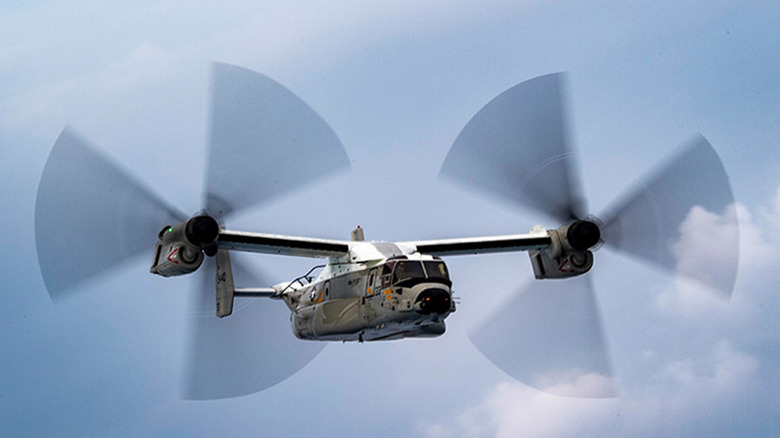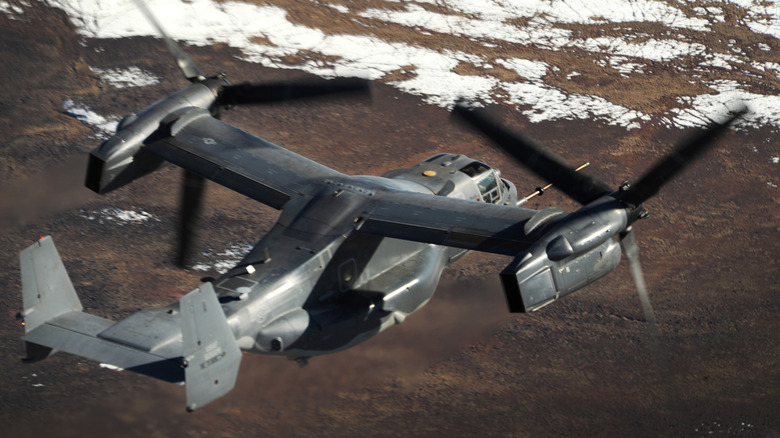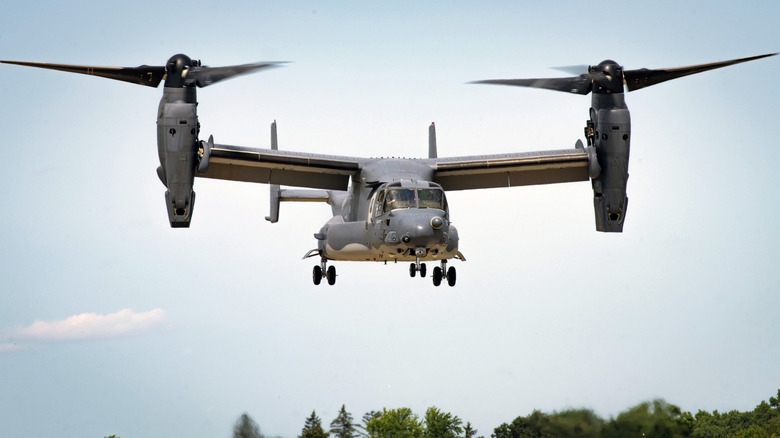Where Is The Bell Boeing V-22 Osprey Being Built?
There are certain aircraft that refuse to be pigeon-holed. The Bell Boeing V-22 Osprey is one of them. The Osprey is unique among aircraft, being something of a transformer type. It's designed to offer the benefits of a fixed-wing aircraft, but with the landing and take-off capabilities of a helicopter. This makes it an incredibly versatile multi-role aircraft that can land and take off from places that conventional aircraft fear to tread and yet still offers all the high-speed, high-altitude performance of a turboprop aircraft when in flight. Among the roles this remarkable aircraft can fill are air assault, transport, aerial refueling, and special ops, to name a few.
The Bell Boeing V-22 Osprey first took to the air in March 1989, and full-rate production was granted in September 2005, with the first operational Osprey delivered to the United States Air Force (USAF) in early 2007. Since then, more than 475 Ospreys have been ordered and built from Bell Helicopters main assembly facility in Amarillo, Texas. The team responsible for the production of the aircraft is known as "Team Osprey" and consists of 27,000 employees, working for more than 500 US-based companies spread across 44 states. Let's have a closer look at "Team Osprey", where the Bell Boeing V-22 is built, and some of the fascinating technical details that make up this one-of-a-kind aircraft.
Rotor City, USA
As the name suggests, the Bell Boeing V-22 Osprey is a collaboration between Bell Helicopters (officially Bell Helicopter Textron Inc.) and the Boeing Company. As noted, the production center that the company uses as one of its leading assembly plants is in Amarillo, Texas. The strength of the city's association with the aircraft (and other Bell Helicopters) is such that it is often referred to as "Rotor City, USA." It's at this plant that all variants of the Osprey are assembled. This includes the MV, CV, and CMV variants of the craft.
However, while Amarillo's and Bell's role in the Osprey's assembly has helped earn the city its nickname, it's far from being the only American place helping to build the aircraft. Boeing is the other main partner in the manufacture of the aircraft. More specifically, it's Vertical Lift division, based in Ridley Park, Pennsylvania, this is where the fuselages are built for the V-22. The factory is a recently upgraded 85-year old former steel-foundry that also manufactures the H-47 Chinook, a helicopter with a 60-year legacy. While Bell and Boeing are the main manufacturers associated with the craft, there are some other notable entries worth mentioning. These include BAE Systems, Moog, and Honeywell International. All are playing valuable roles in the complex team known as Team Osprey.
Is it a plane? Is it a helicopter? No, it's the V-22 Osprey
Helicopters are incredibly useful for militaries; they can land anywhere there is a patch of ground big enough and can fulfil a variety of combat roles. However, they aren't without their drawbacks. Compared to conventional aircraft, they're slower, have a shorter combat range, and are less fuel efficient. These are the operational shortcomings that the Osprey was designed to fill. To achieve this, the Osprey uses a tilt-rotor system. The rotors can be configured horizontally for take-offs, landings, and to allow the aircraft to hover. When the Osprey is in flight, the rotors tilt vertically to give the aircraft more of a "traditional turboprop" appearance and performance. This trick gives the Osprey a top speed that is nearly twice as fast as the average helicopter.
The Osprey has a maximum cruise speed of 306 mph thanks to its two Rolls-Royce Liberty AE1107C engines producing 6,200 shaft horsepower each. It also boasts a combat radius of 500 nautical miles and can carry up to 32 personnel (up to 24 personnel when seated) or 10,000 pounds of cargo. The engines are also robust enough to allow the Osprey to fly with just one engine — although hovering is a different story. To enable the aircraft to take off and land wherever it's needed, the V-22 also features a range of 'runway independence technologies.' While there are definite strengths and weaknesses with the V-22 Osprey, it's these attributes that make this craft one of the most versatile in the US military's inventory.


